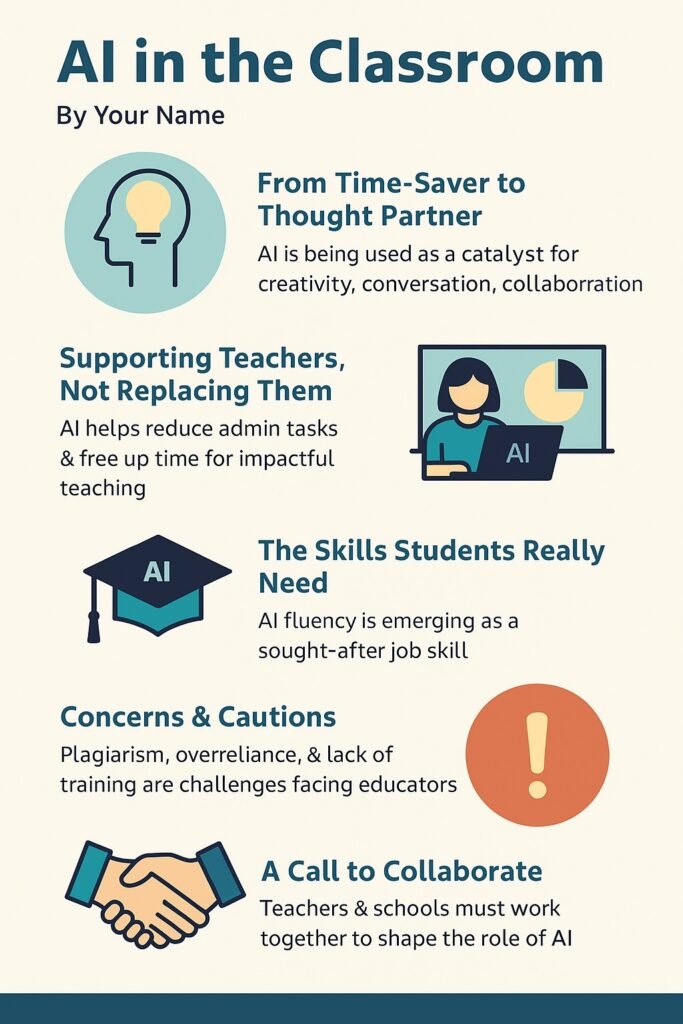Microsoft’s 2025 AI in Education report offers a comprehensive look at how schools, teachers, and students are embracing AI tools to enhance learning, improve efficiency, and build essential future-ready skills.

From Time-Saver to Thought Partner
Across 86% of educational institutions surveyed, generative AI is already in use – the highest rate of adoption across any sector. But what’s truly exciting is how AI is evolving beyond being a time-saving assistant. Educators are now using it as a catalyst for creativity, conversation, and collaboration. Students in Fulton County Schools, USA, for instance, use Copilot Chat not to write essays, but to spark ideas and brainstorm in ways that foster deeper learning and confidence.
In a recent study from Australia, university students who used an AI-powered chatbot saw a nearly 10% improvement on their exam grades over peers who weren’t using the tech.
Supporting Teachers, Not Replacing Them
Teachers face increasing pressure to personalise learning, meet diverse needs, and manage heavy workloads. The report highlights how institutions like the University of Manchester and the Education Authority of Northern Ireland have adopted Microsoft 365 Copilot to reduce admin tasks and free up time for impactful teaching. In Northern Ireland, teachers are now preparing lessons faster and more effectively, using AI to design content tailored to individual learning styles.
Bridging Gaps and Boosting Inclusion
AI also opens doors for equity. In Belgium, schools use reading tools powered by AI to help students learning in multiple languages. Meanwhile, studies show that AI helps neurodivergent individuals feel more included and confident in both learning and work environments.
The Skills Students Really Need
As the job market changes, AI fluency is emerging as one of the most sought-after skills. In fact, 66% of hiring managers say they wouldn’t hire someone without basic AI literacy. To keep pace, universities and schools are embedding AI literacy into their curriculums. From Minecraft Education projects to virtual teaching assistants, students are being equipped with not just technical skills, but also with the ability to collaborate, delegate, and think critically alongside AI.
Concerns and Cautions
Of course, the report doesn’t ignore the challenges. Teachers remain concerned about plagiarism, over-reliance on AI, and the risk of misinformation. Students, too, worry about accusations of cheating and losing the joy of learning. There’s also a stark gap in training – 45% of educators and over half of students in the US say they haven’t received any formal instruction on how to use AI responsibly. The message is clear: we need quality, job-embedded professional development for staff and clear guidance for students.
A Call to Collaborate
The report calls for a united approach. Teachers, students, IT teams, and leaders must work together to shape the role of AI in their institutions. Whether it’s addressing cybersecurity, building inclusive tools, or redesigning assessments, collaboration is key.
Looking Ahead
AI isn’t just a tool – it’s a partner in reimagining education. From helping struggling readers to guiding university researchers, it’s enhancing how we teach and learn. As educators, our role is not to compete with AI, but to guide students in using it wisely – to ask better questions, explore new ideas, and stay human in an increasingly digital world.
